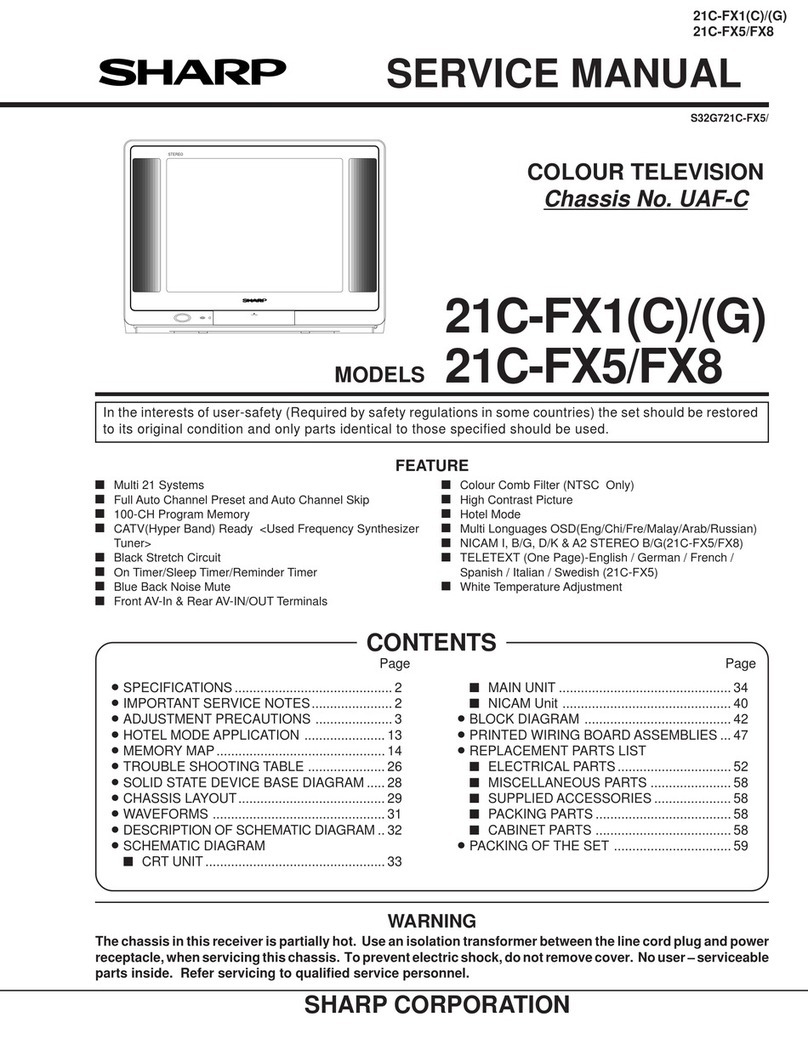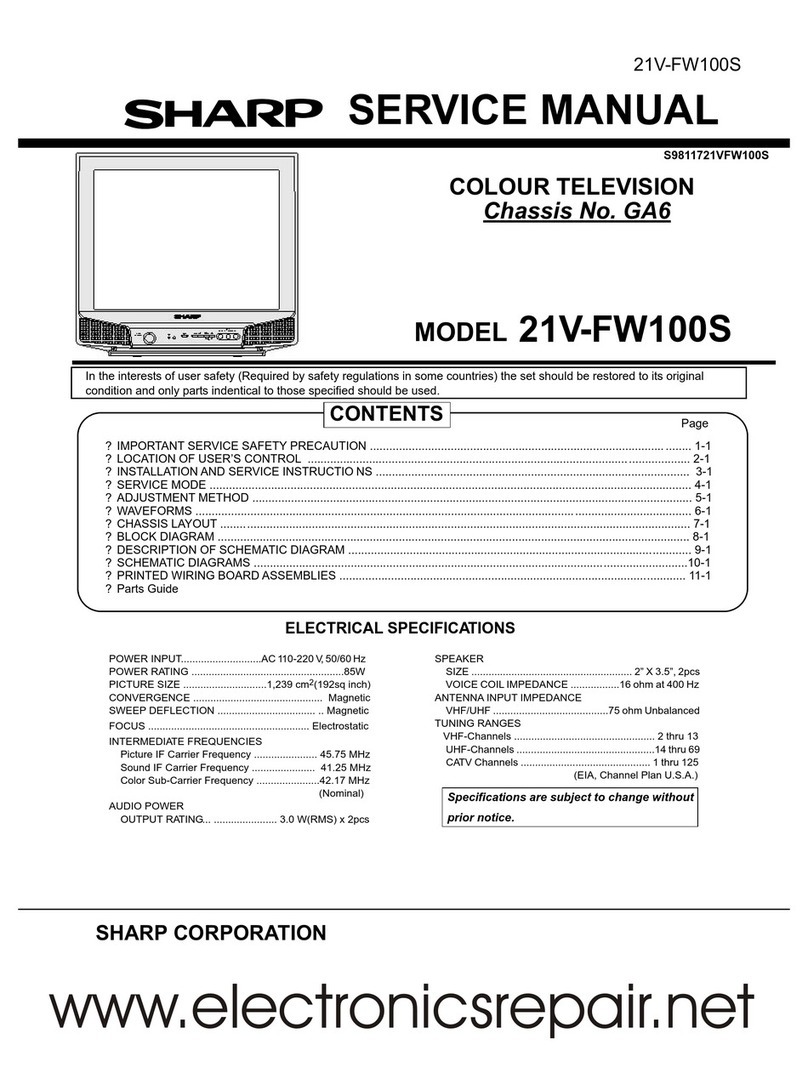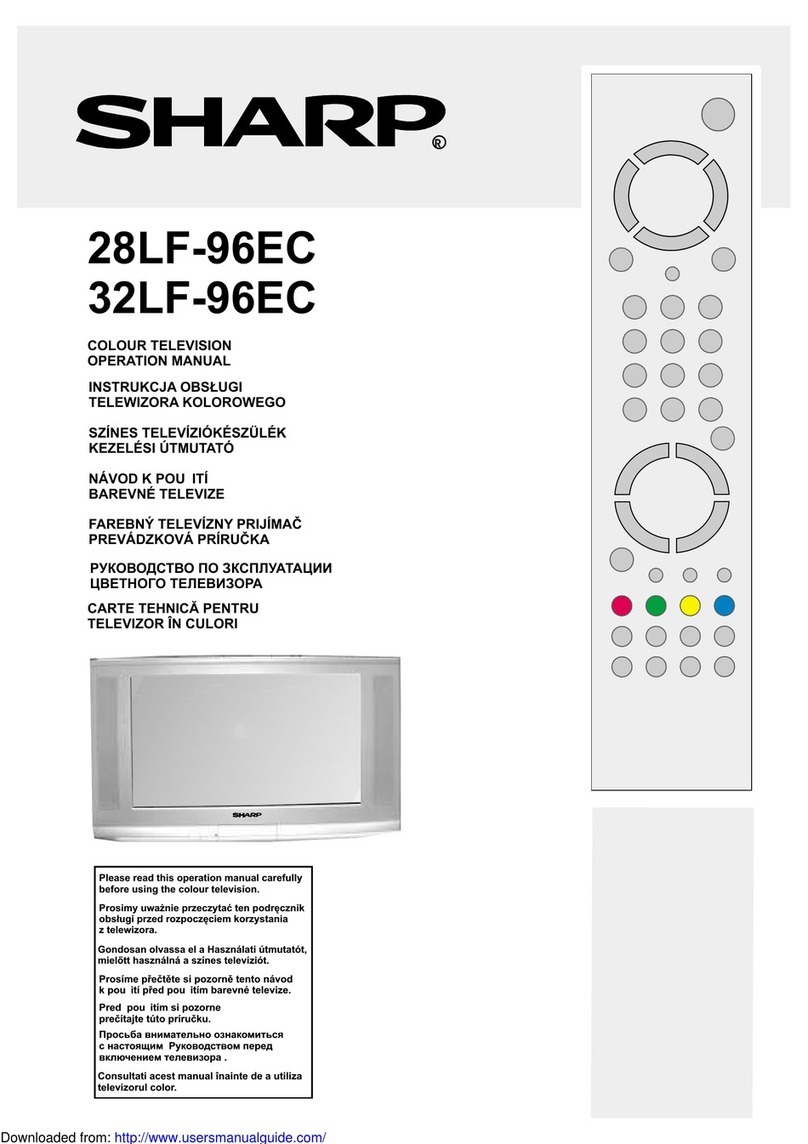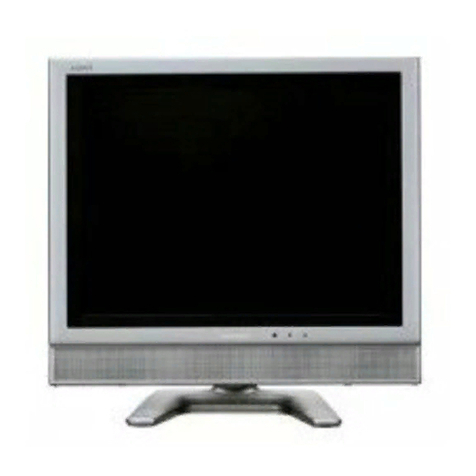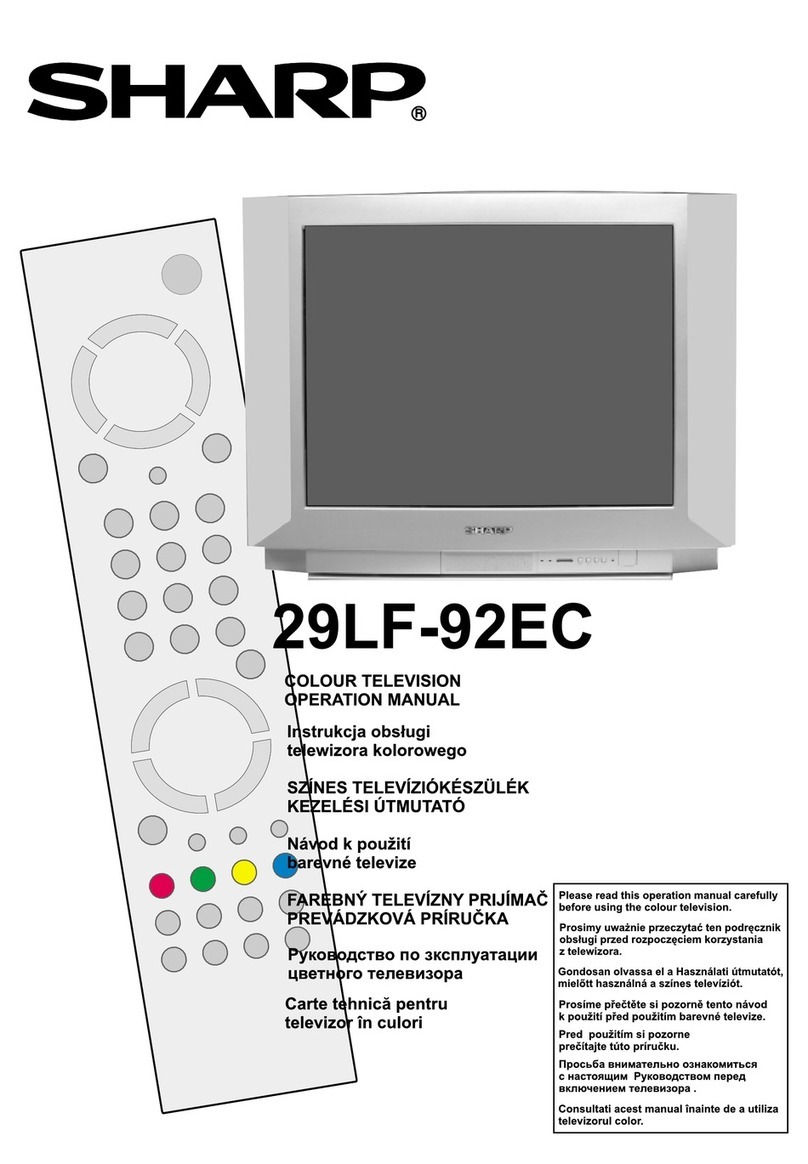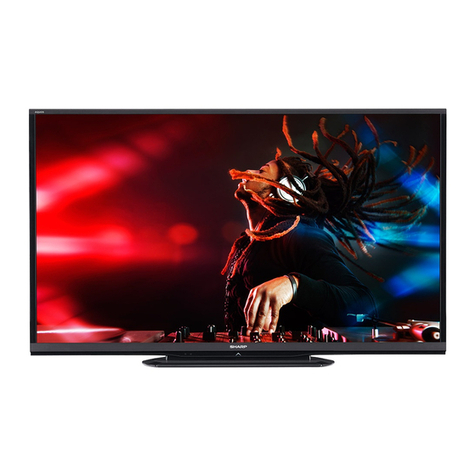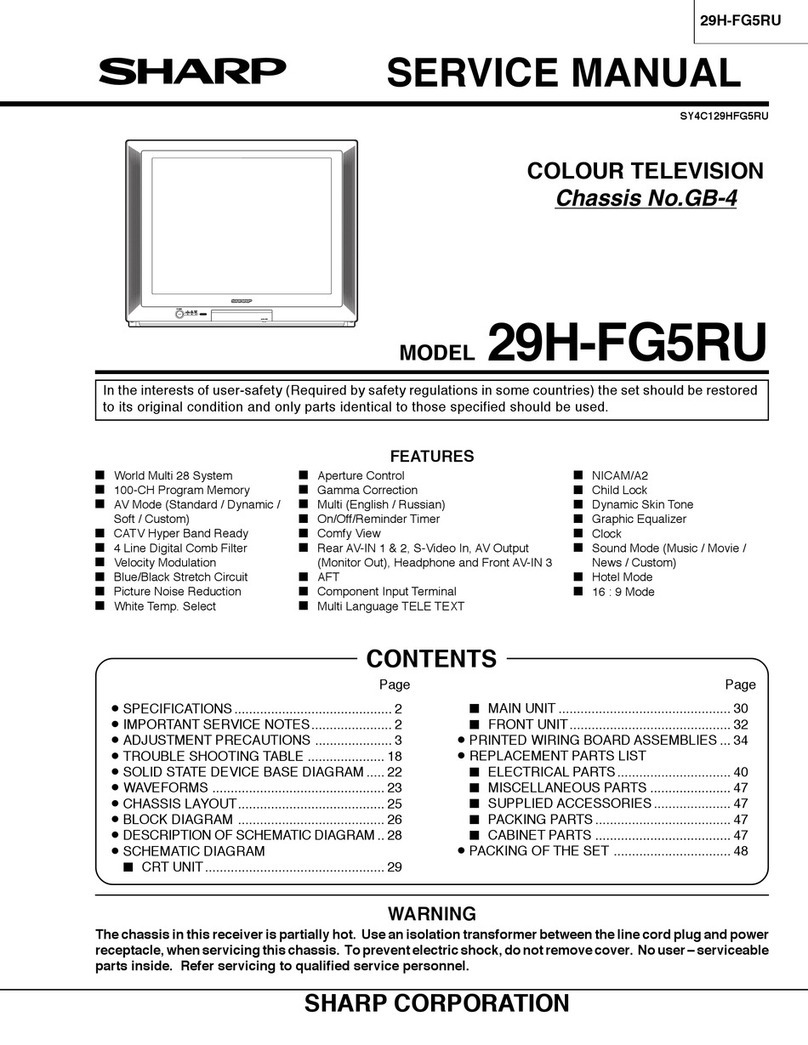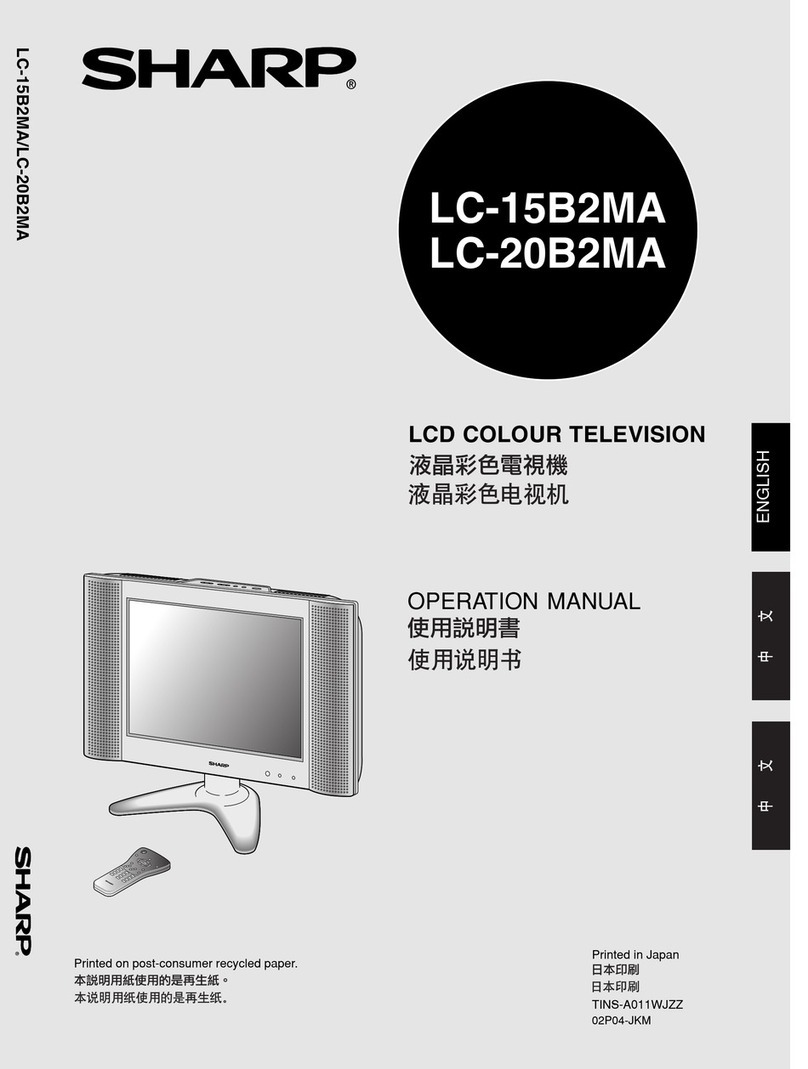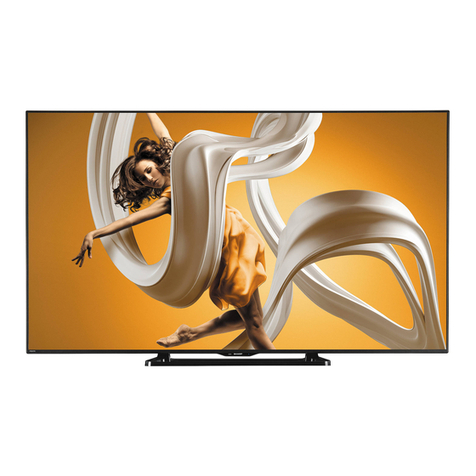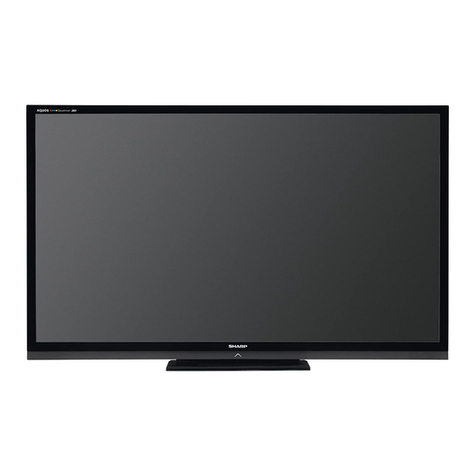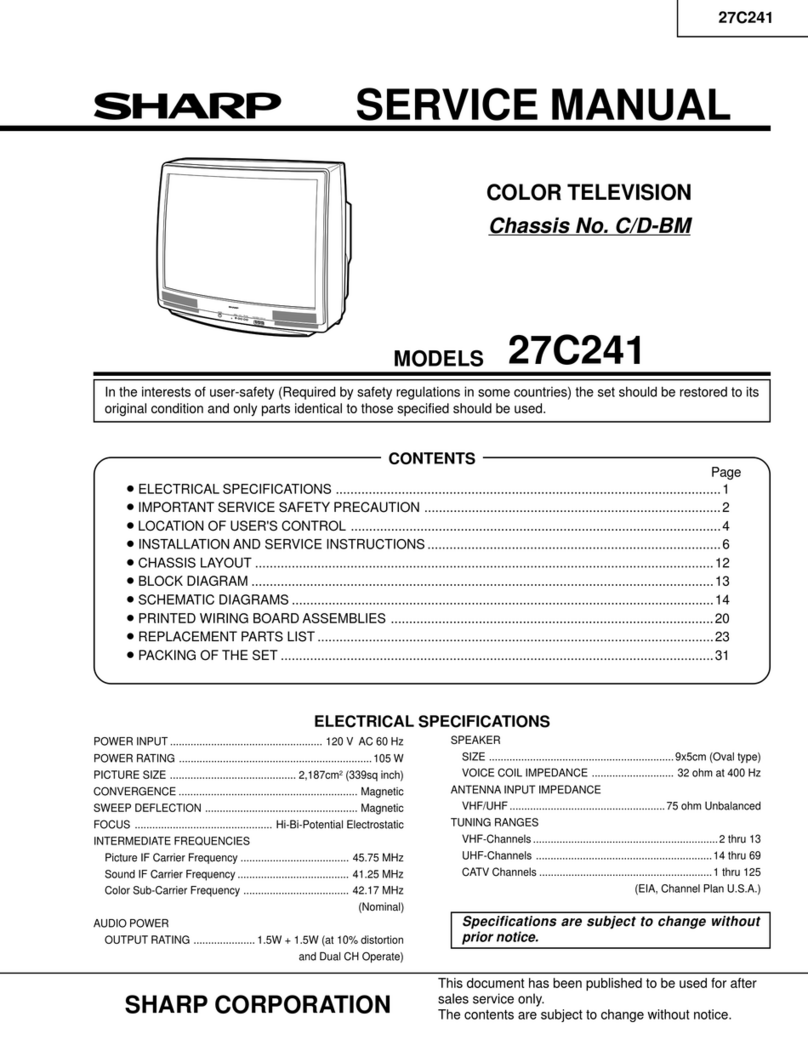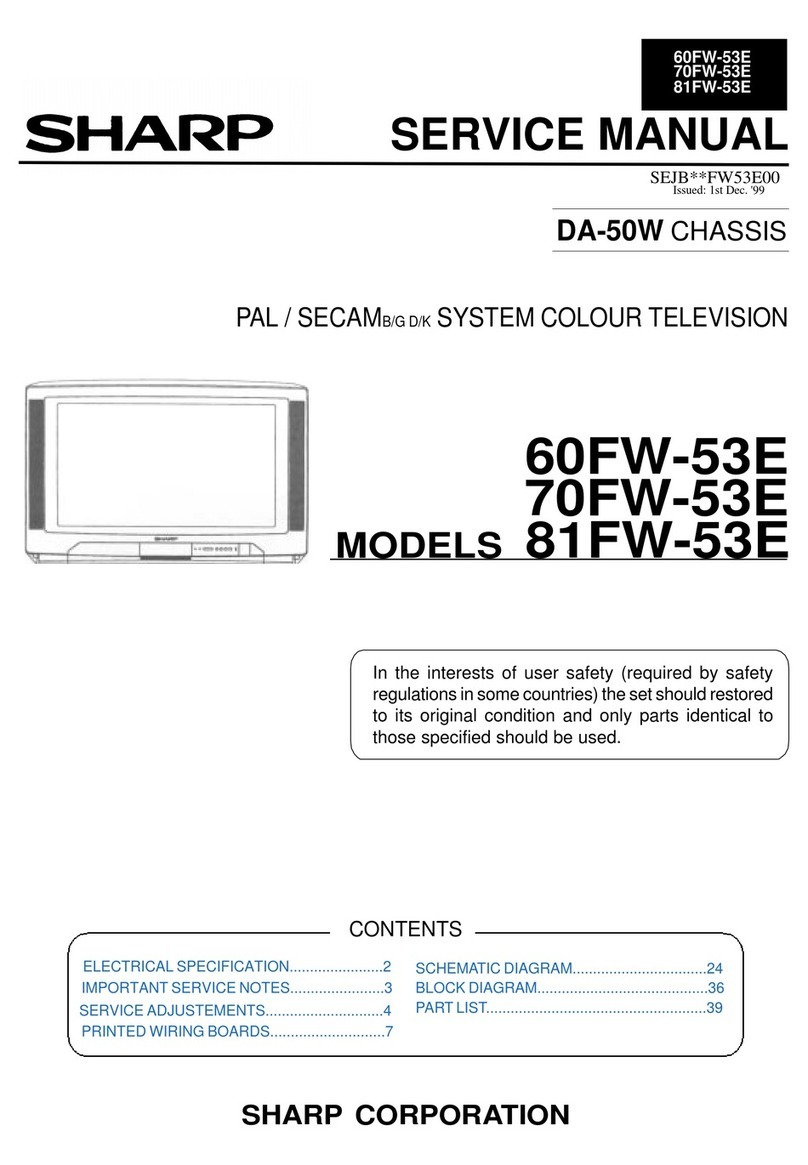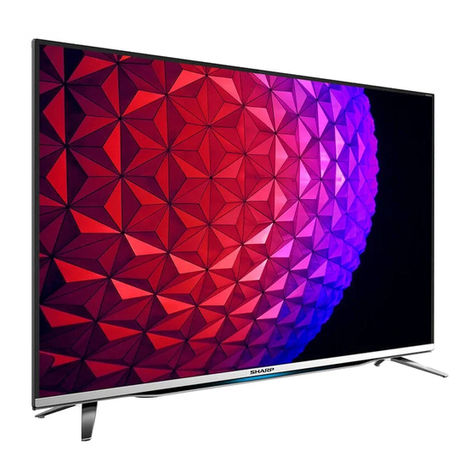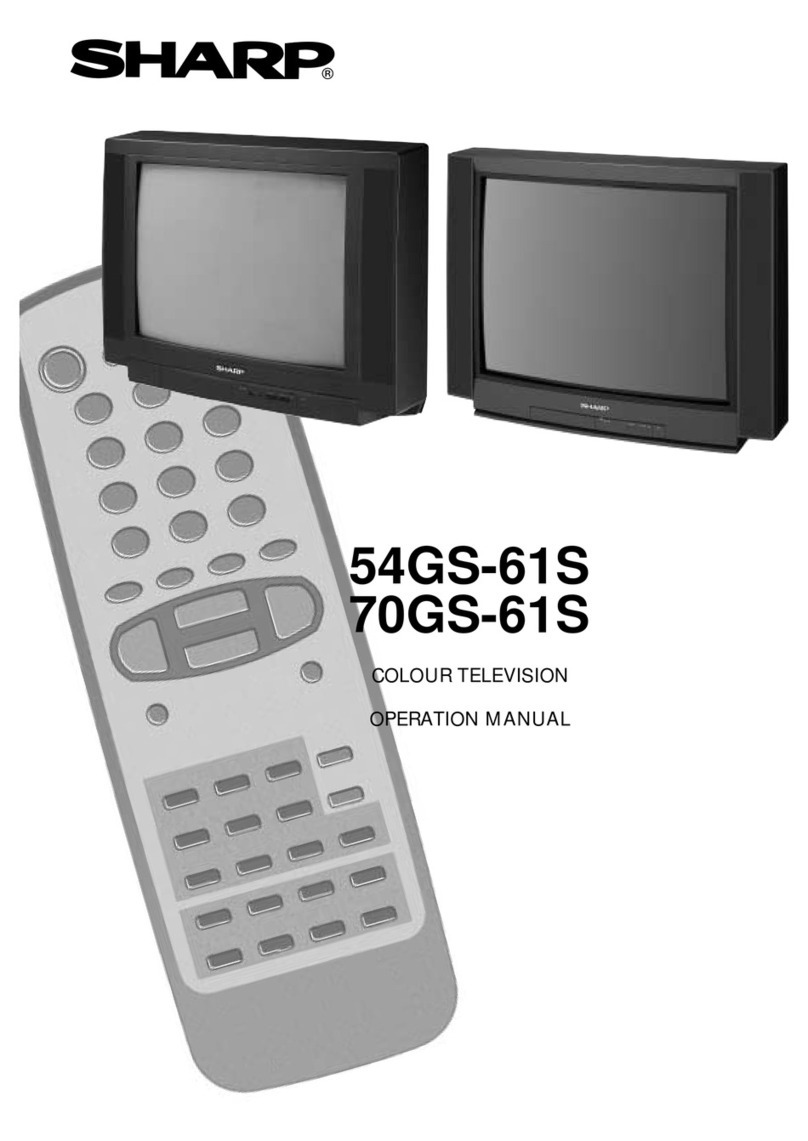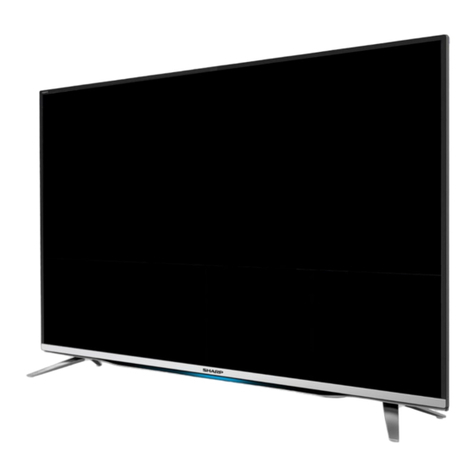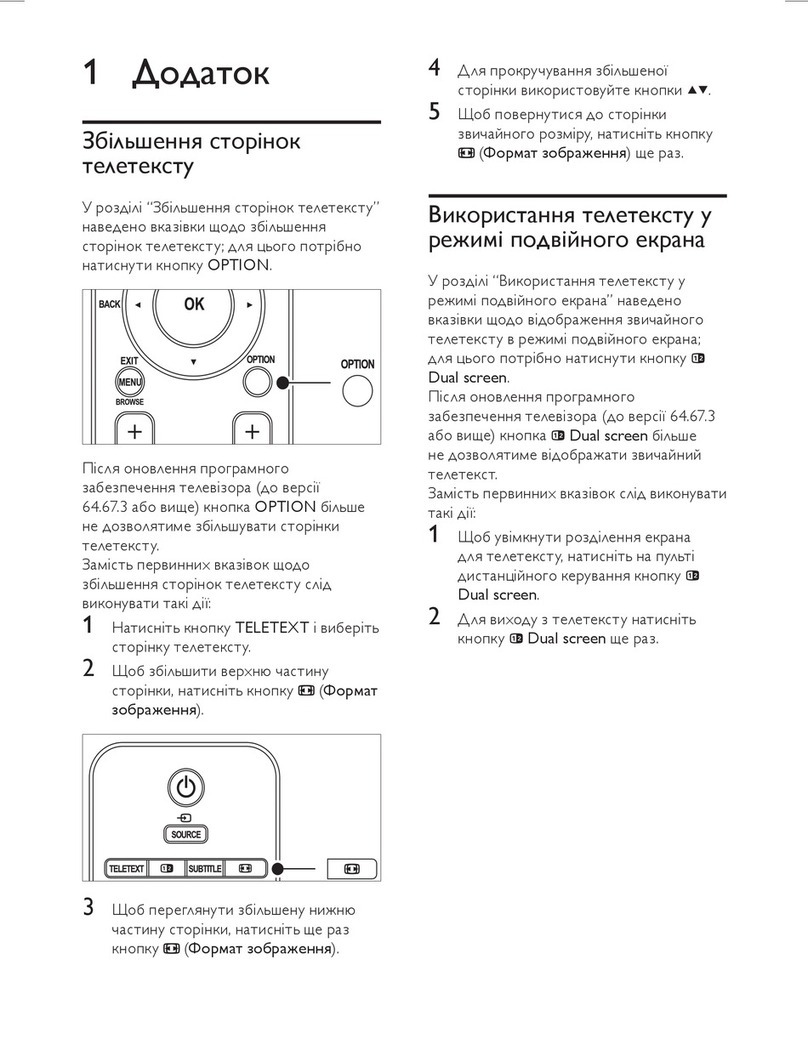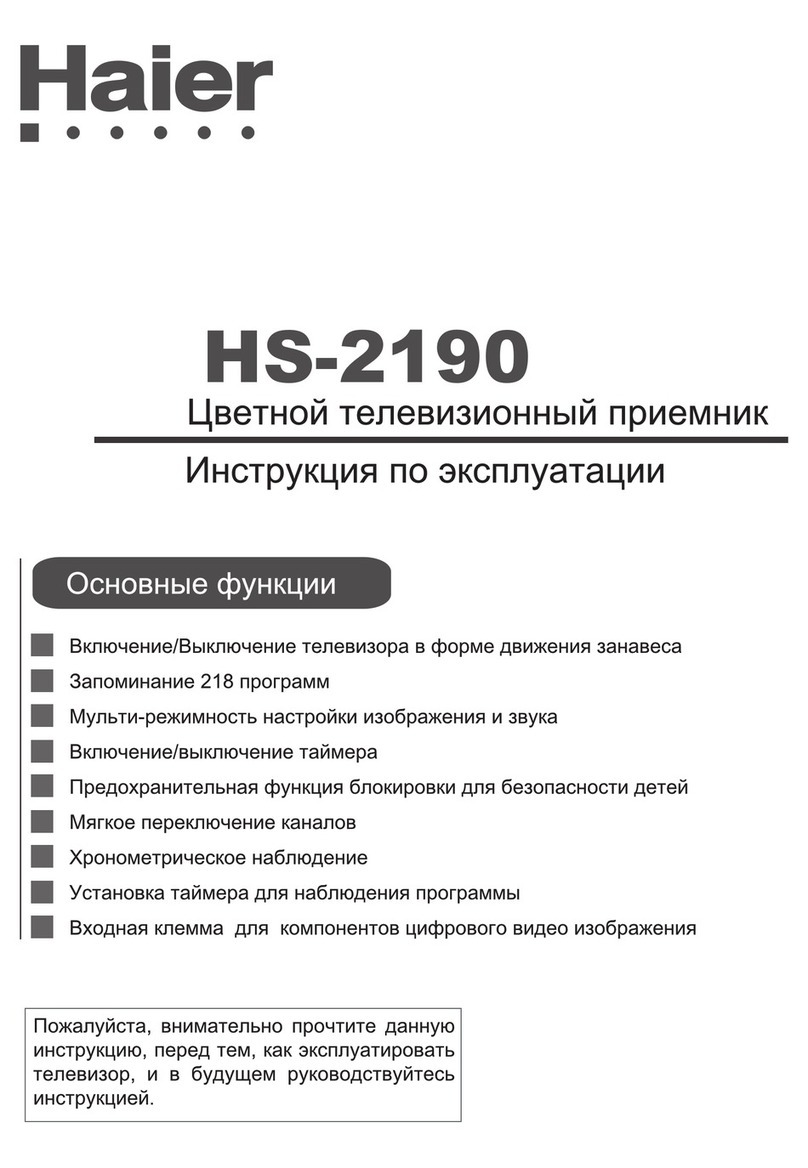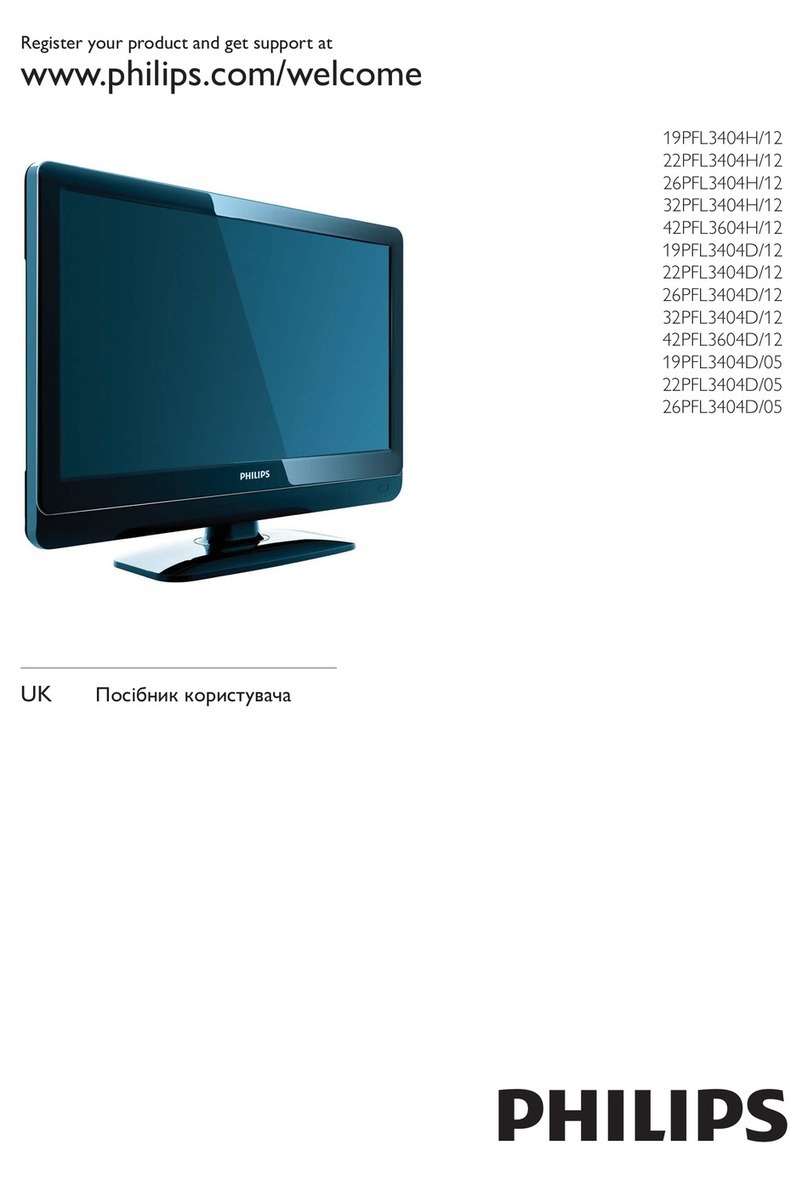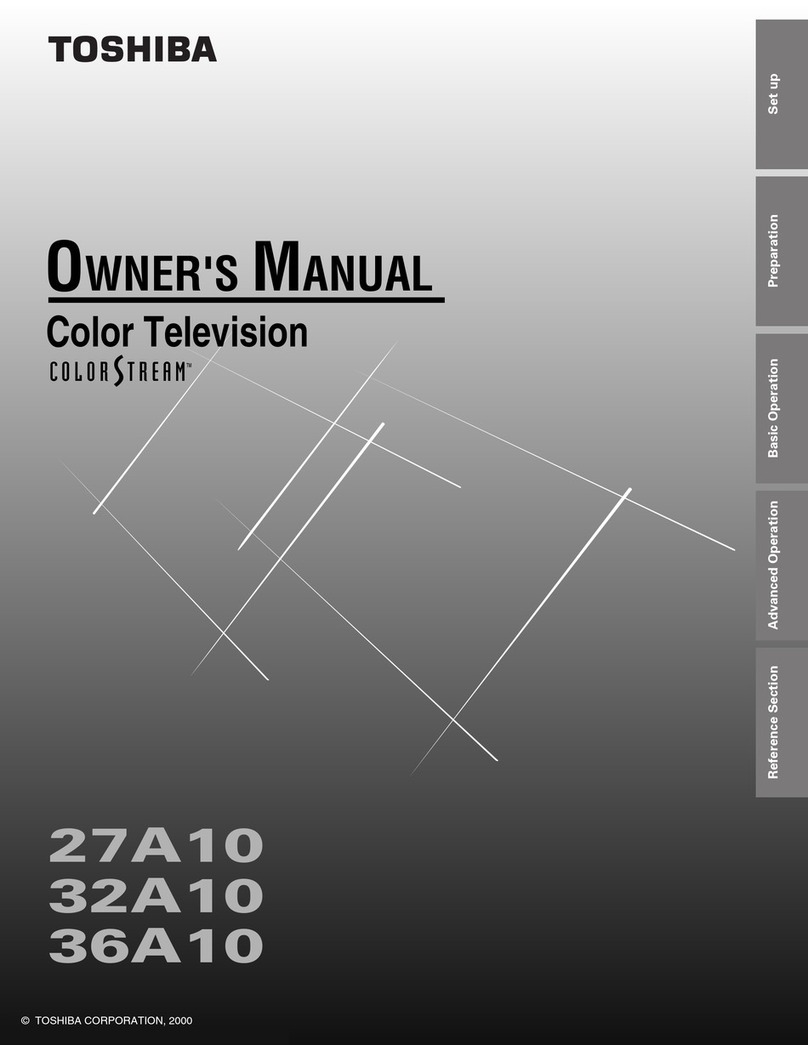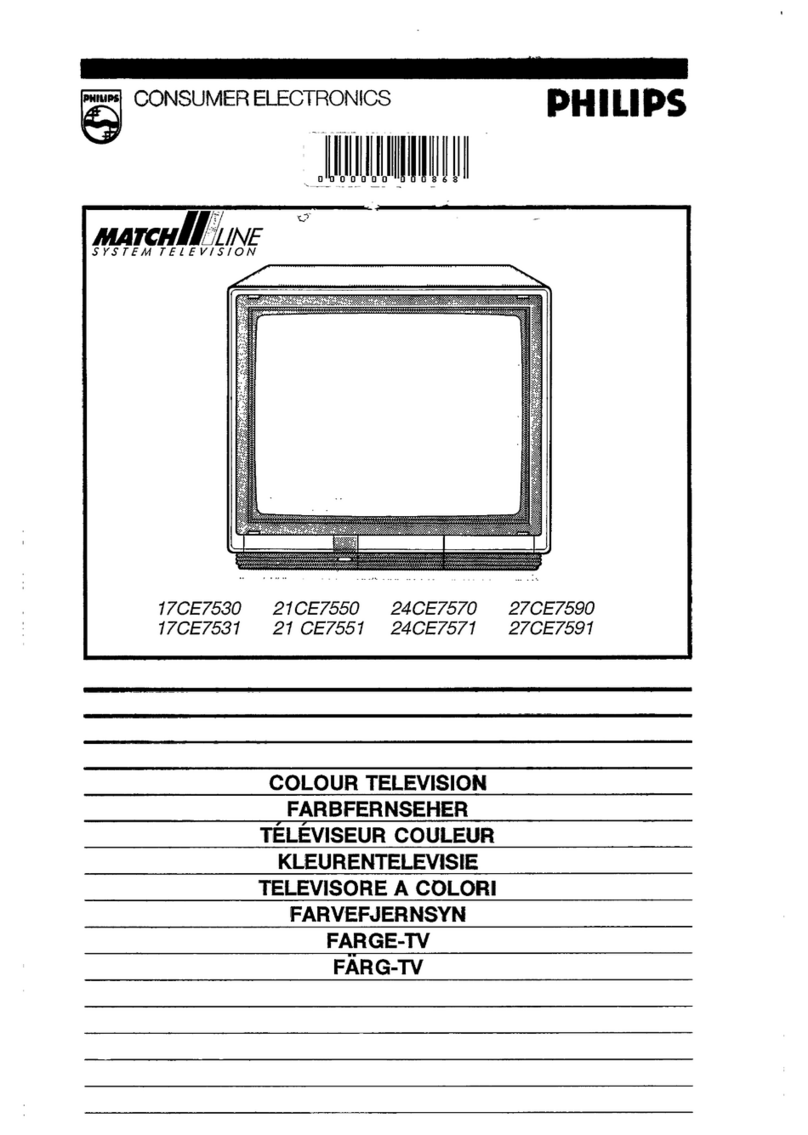
2
2-1 2-2
SX80J9
ELECTRICAL SPECIFICATIONS
Power Input............................................................................ AC 220-240V, 50Hz
Power Consumption ...................................................................................... 230W
Convergence................................................................. Self Convergence System
Focus .........................................................Bi-Potential, Uni-Potential Electroslatic
Sweep Deflection ..................................................................................... Magnetic
Intermediate Frequency
Picture IF Carrier.................................................................................. 38.9 MHz
Sound IF Carrier
6.5 MHz .......................................................................................... 32.4 MHz
6.0 MHz .......................................................................................... 32.9 MHz
5.5 MHz .......................................................................................... 33.4 MHz
4.5 MHz .......................................................................................... 34.4 MHz
Colour Sub-Carrier
PAL/NTSC..................................................................................... 34.47 MHz
SECAM ............................................................................. 34.494/34.65 MHz
NTSC .............................................................................................35.32 MHz
Audio Power Output Rating ................... 4W x 1 + 8W x 2 + 13W total 33W (Max)
Speaker
Size...................... 5 x 9 cm Elliptic x1,10 cm Round x 2-pcs., 10cm Woofer Box
Voice Coil Impedance ................................ 16 ohm at 400 Hz, 8 ohm at 400 Hz,
5 ohm at 400Hz (Woofer Box)
Aerial Input Inpedance ............................................................75 ohm Unbalanced
Receiving Channels
PAL-B/G, SECAM-B/G
VHF....................................................................................AU0 thru AU12
NZ1 thru NZ11
E2 thru E12
UHF ................................................................................... E21 thru E69
CATV...................................................................................... X thru Z + 2,
S1 thru S41
PAL-D/K, SECAM-D/K
VHF......................................................................................R1 thru R12,
C1 thru C12
UHF ..................................................................................... 21 thru 69,
C21 thru C57
PAL-I, SECAM-I
VHF............................................................... (IRELAND): A thru J
UHF ............................................................... (U.K.,H.K.): 21 thru 69
NTSC-M
VHF..........................................................................(US): 2 thru 13
(JAPAN): 1 thru 12
UHF .........................................................................(US): 14 thru 69
(JAPAN): 13 thru 62
CATV........................................................................(US): A-6 thru A-1
A thru W+29
(JAPAN): C13 thru C63
Receiving Frequency
VHF Low .................................................................44.25 MHz thru 140.25 MHz
VHF High ...............................................................147.25MHz thru 423.25 MHz
UHF ...................................................................... 431.25 MHz thru 863.25 MHz
Specifications are subject to change without notice.
IMPOTANT SERVICE NOTES
Maintenance and repair of this receiver should be done by
qualified service personnel only.
SERVICING OF HIGH VOLTAGE SYSTEM AND
PICTURETUBE
When servicing the high voltage system, remove static charge from it by
connecting a 10k ohm Resistor in series with an insulated wire (such as a
test probe) between picture tube dag and 2nd anode lead.(AC line cord ahould
be disconnected from AC outlet.)
1. Picture tube in this receiver employs integral implosion protection.
2. Replace with tube of the same type number for continued safety.
3. Do not lift picture tube by the neck.
4. Handle the picture tube only when wearing shatterproof goggles and after discharging
the high voltage completely.
X-RAY
This receiver is designed so that any X-Ray radiation is kept to an absolute
minimum.Since certain malfunctions or servicing many produce potentially
hazardous radiation with prolonged exposure at close range, the following
precautions should be observed:
1. When repairing the circuit,be sure not to increase the high voltage to more than 35.0 kV
(at beam 0µA) for the set.
2. To keep the set in a normal operation, be sure to make it function on 30.5 ± 1.5kV (at
beam 2.0 mA) in the case of the set. The set has been factory-Adjusted to the above
mentioned high voltage.
If there is a possibility that the high voltage fluctuates as a result of repairs, never
forget to check for such high voltage after the work.
3. Do not substitute a picture tube with unauthorized types and/or brands which may cause
excess X-Ray radiation.
BEFORE RETURNINGTHE RECEIVER
Before returning the receiver to the user,perform the following safety checks.
1. Inspect all lead dress to make certain that the leads are not pinched or that hardware is
not lodged between the chassis and other metal parts in the receiver.
2. Inspect all protective device such as non-metallic control knobs, insulating fishpapers,
cabinet backs, adjustment and compartment covers or shields, isolation resistor- ca-
pacity networks, mechanical insulators etc.
